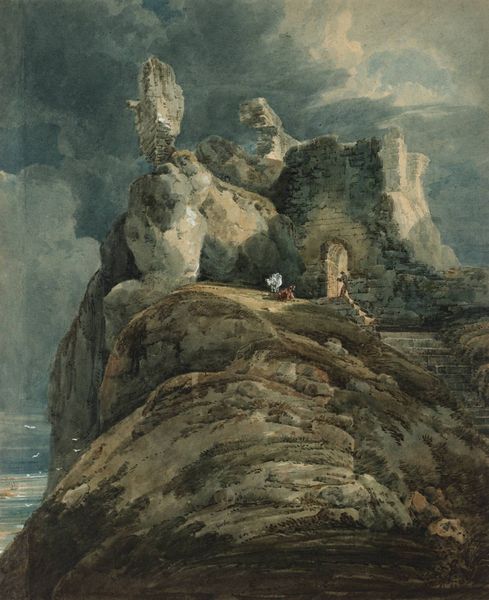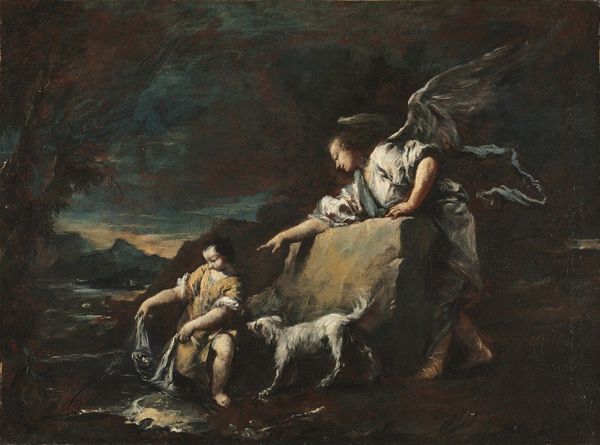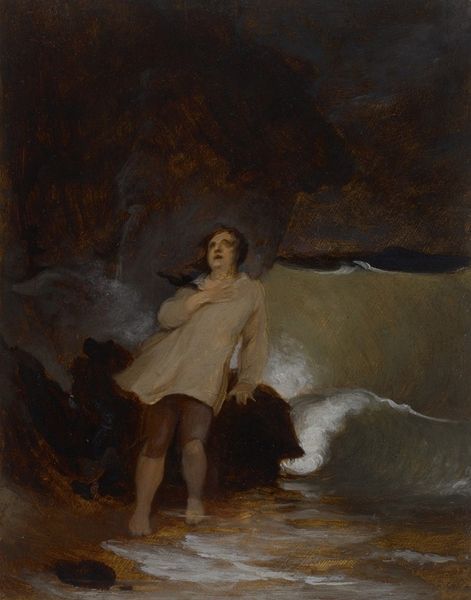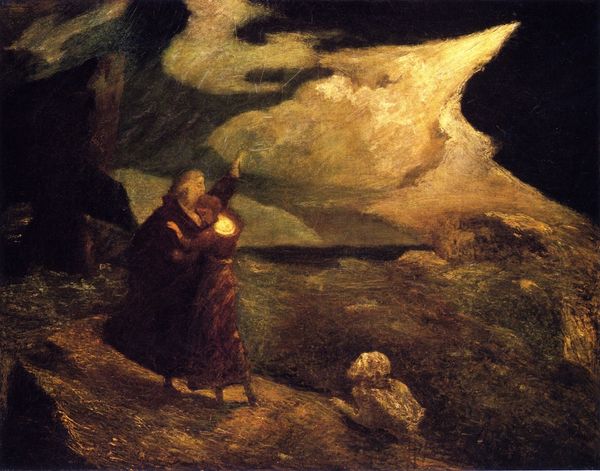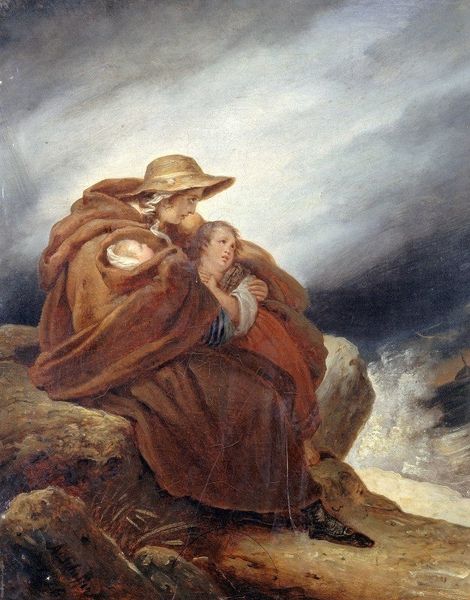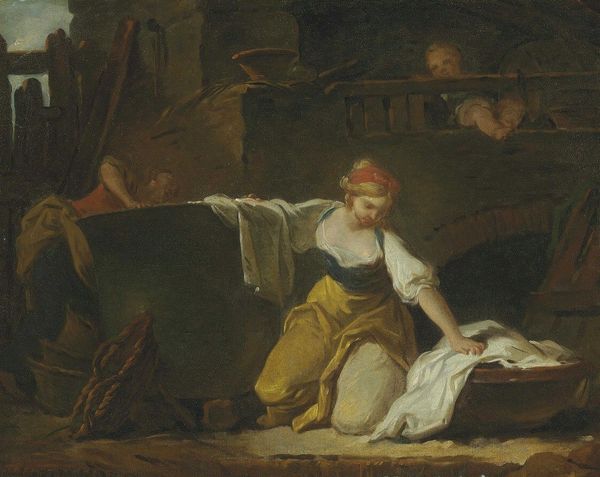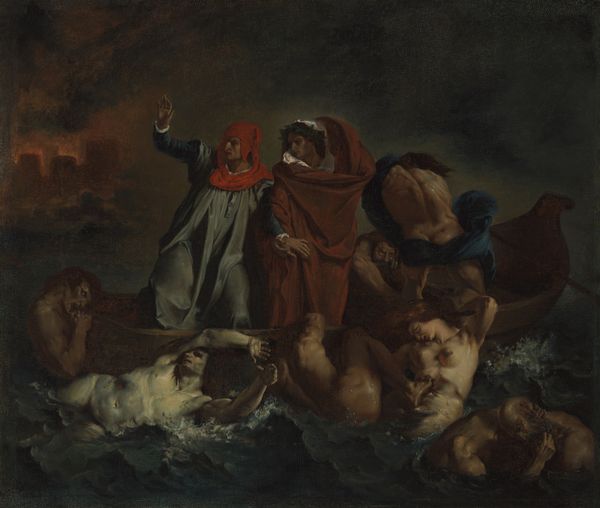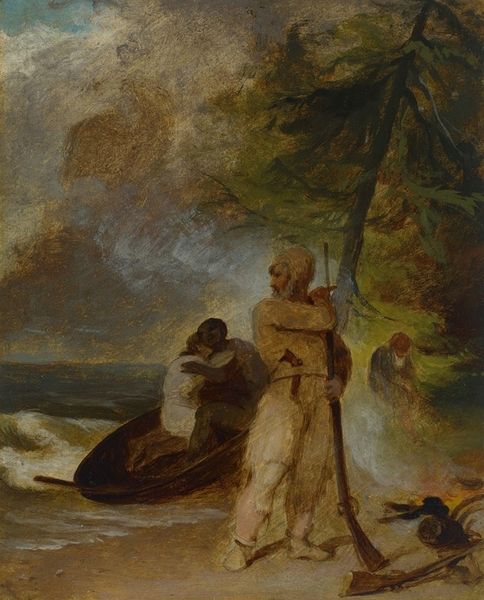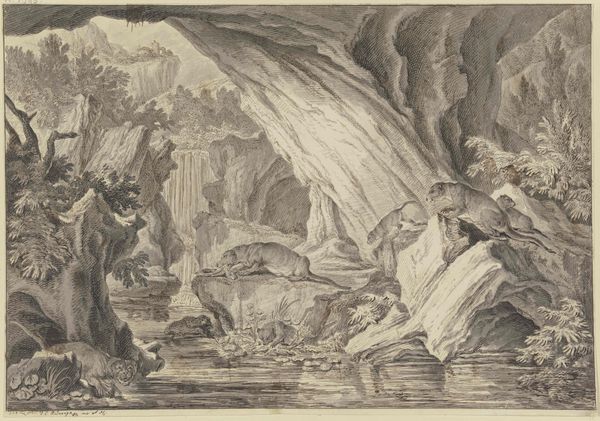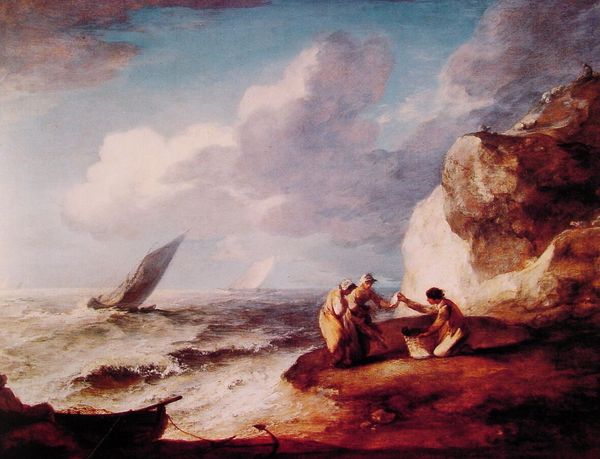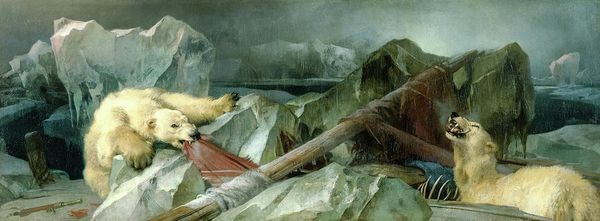
watercolor
#
narrative-art
#
landscape
#
figuration
#
watercolor
#
romanticism
#
mythology
#
history-painting
#
watercolor
Copyright: Public Domain: Artvee
Editor: Here we have Théodore Géricault's "The Tempest," created between 1811 and 1823, using watercolor. There's such a sense of despair in this image with the storm, the figure huddled by the shore…What do you see in this work? Curator: This watercolor allows us to think about Géricault's socio-political concerns, beyond the traditional framing of Romanticism. The shipwreck can be read as a metaphor for powerlessness and human vulnerability in the face of both natural disasters and social injustices. Editor: So you're suggesting it’s about more than just a literal storm? Curator: Exactly. Who are these figures cast ashore, and what does it mean to depict them so vulnerable? Consider the history of colonialism; were the people shipwrecked victims of larger social, economic, and political "storms," if you will? Editor: That adds a whole new dimension. The use of watercolor becomes interesting too. Is it meant to evoke the fragility of life? Curator: The medium itself emphasizes the ephemeral nature of existence, especially when considered through a lens that acknowledges structural inequities. Editor: I see. So, looking at this painting now, it isn't just a depiction of a storm; it's a commentary on marginalization and human struggles against greater forces. Curator: Precisely. This piece exemplifies how art from the Romantic era isn’t just about individual emotion but can reflect societal inequalities and the plight of marginalized groups. Editor: Thanks, this conversation gave me much more insight! Curator: The pleasure was mine. I hope it sparked a new understanding of how we approach art and its relationship to the world we live in.
Comments
No comments
Be the first to comment and join the conversation on the ultimate creative platform.
